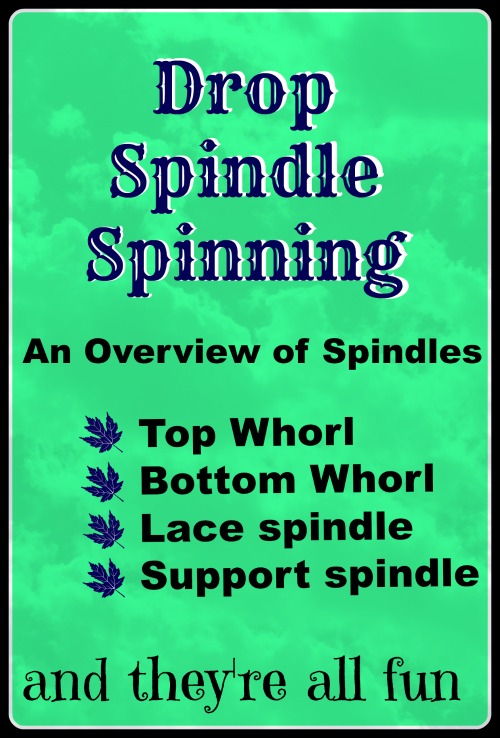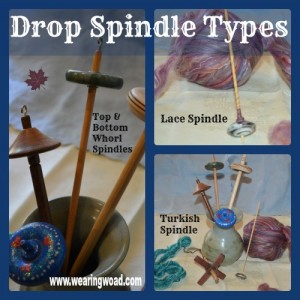There are an unlimited number of things to use for natural dying, fabric, yarn, roving, and washed fleece all come to mind. Dying a natural coloured sweater that has gotten stained or just looks worn is a favorite of mine. Natural fibre blouses are also awesome to over-dye if the initial pale colour has become worn or stained.
However, if you have dyed roving or fleece then you will either end up felting it, or spinning it. Or you can try knitting it without spinning it first, which works alright for tiny projects but is too time consuming for larger ones. Spinning is a fun step in creating your own sustainable clothing.
There are as many types of drop spindles as there are cultures that use spinning, and spinners who got inventive. Spindles range from the inexpensive and easily made at home, to fancily carved solid wood or stone, ceramic, pottery, and even glass or metal. 
Spindles are basic, they have a shaft, a whirl, and a notch or hook to hold the yarn secure while you are spinning. The types range from top whirl and bottom whirl, to floor spindles, lace spindles, and support spindles.
Overview of Drop Spindle Types and Uses:
Top and Bottom whirl spindles are normally used for every-day worsted weight spinning. You can spin nearly anything on them, though long-line linen might be a challenge, most wool, mohair, and silk are easy enough on this type of spindle.
For top and bottom whirl spindles the lighter the spindle the finer the yarn, and the heavier the spindle the thicker the yarn. Which means your yarn may well end up thicker than you were intending when your spindle begins to fill up and get heavy.
For spindle spinning, you will want at least three spindles. Two spindles to spin on, and one to ply those two onto. Alternatively you can have one spindle and a ball winder so you can spin and ply on the same spindle.
Lace or support spindles are very light, usually do not have a large whirl, and are used in a bowl or on a table top to prevent strain on the yarn. Support spindles are also used for fibres with a short staple length like cotton, cashmere, yak, or camel. As the short fibres are often the warmest and exotic fibres, using a support spindle also helps you get the finest yarn possible and so make the fibre go as far as possible.
There are a range of other types of spindles as well. The floor support spindle such as the Navaho once used or the Turkish spindle which forms a ball of yarn well you are spinning.

Finding your Spindle obsession:
Yes, it is easy to form a spindle obsession. For starters, chose one that fits where you are with your learning. If you are just starting, a spindle made from a wooden wheel, a dowel, and a hook will not break and is easy to customize with paint or a bit of carving. If you are more advanced, a wooden Turkish spindle may be interesting, or a stone or ceramic spindle. If you are going for a stone spindle, make sure you are at a point where you no longer drop the spindle and don’t use it over cement.
For support or lace spindles, a professionally made one will have the best balance and twist ratio. For a basic support spindle for short fibres, a large flat glass bead on a thin dowel that has been shaped to a rounded point on the base can work.
Note: If you are used to spinning on a wheel, you may have difficulty transitioning to spinning on a drop spindle. However, if you learn to spin on a drop spindle it is very easy to transfer to the wheel. Drop spindle spinning is awesome for children, anyone over six can learn drop spindling and how to make their own spindles.
Back to you:
What fibre arts do you enjoy doing with your naturally dyed fibres or fabrics? Have you tried spinning? What is your favorite spindle or spindle maker?
Leave a Reply